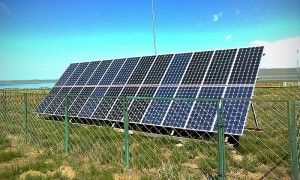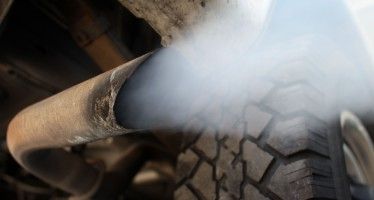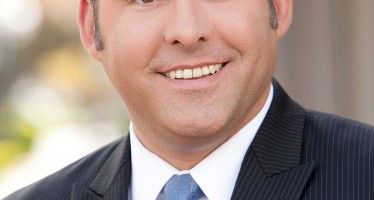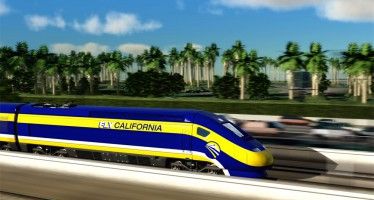Gridlock On Renewable Energy Highway
MAY 24, 2011
By K. LLOYD BILLINGSLEY
California politicians want to draw 33 percent of the state’s energy needs from “renewable” sources such as wind and solar by 2020, fewer than 10 years away. That plan will be hard to pull off for many reasons, including those outlined by energy expert Merwin Brown, Electric Grid Program Director at the California Institute for Energy and the Environment (CIEE).
“Renewables exhibit behavior for which the grid was not designed, and for which operators are not equipped,” said Brown on Thursday at the University of California’s Sacramento Center, in a lecture on “New Smart Grid Technologies for Renewable Generation Deployment.”
Brown admitted to pulling a “bait and switch” because he wanted to concentrate on “the problems we are trying to solve.” Power outages, he said, were a threat to health and security, and also expensive. He pegged the cost of the 2001 blackouts at $10 billion.
Electrical grids are “the world’s largest machine,” multi-state and even multi-country networks that present “quite a challenge” to renewable sources such as wind, a “variable” source by which he meant “intermittent.”
“Wind is not there when the loads occur,” Brown said. “Wind is abundant when loads are low.”
Such variability calls for backup power measures, but could also result in a situation where “the grid has more electricity than it can sell.” The existing power grid, he said, was not designed for such “back feed,” when generation exceeds load.
Multiple Agencies
Merwin Brown earned a Ph.D. in nuclear engineering from Kansas State University and boasts 40 years of experience in energy, including a stint as Solar Energy Commissioner of Arizona. He noted that the wind blows hardest “far from urban centers,” which calls for “expensive” new transmission lines.
“The biggest impact is approval to build from multiple agencies,” which he said might not approve, along with residents who object to new towers and lines on aesthetic grounds. Brown also cited planning and recovery costs, and raised the question, “Who pays?”
Brown returned to his intermittent theme, noting that “solar has the same problem” as wind, and the obvious reality that “at night the sun does not shine.” He showed charts demonstrating that wind and solar power “do not complement each other.” Together they could “make worse” the increasing demand cycle he called “ramping.” And they could also make worse the “instability” of the grid, which was designed on the basis of “inherent inertia.”
At one point an attendee, who did not identify herself, interrupted Brown and charged that his presentation was “biased” against renewables. Brown paused to note that renewables do not pollute and are “indigenous,” with no need for importation. Then he continued with the problems to the grid, which include electric cars.
Electric Cars
“Electric cars are an unprecedented challenge,” he said. “Each electric car equals one house” in demands for electricity, and “the system was not designed to meet that demand.” Charging of cars at night was also an issue. “Utilities are not convinced it will be easy,” to adapt for electric cars, Brown said.
California Gov. Jerry Brown recently signed SB 2X by state Sen. Joe Simitian, D-Palo Alto, mandating that 33 percent of the state’s energy come from renewable sources by 2020, an increase of 13 percentage points from the previous mandate of 20 percent.
“It’s about California leading the country,” Gov. Brown told reporters at the signing ceremony. “It’s America potentially leading the world.” At the same event, Simitian said that his new law “will stimulate the economy and improve the environment, while protecting ratepayers from excessive costs.”
Wind and solar power require conventional backup and are also two to four times as costly as conventional power, according to estimates from the U.S. Energy Information Administration (EIA).
Lobbyist Bernadette Del Chiaro of Environment California hailed Simitian’s measure as a huge victory for the environment and said, “California can power itself entirely on clean energy resources like wind, geothermal and solar power.”
Importing Electrons
California has never been able to create enough electricity to meet its needs and now buys 20 to 30 percent of its energy from out-of-state sources.
“Renewable integration adds complexity,” Dr. Brown said Thursday. “Maybe we can build our way out,” but “it will take new technology to make renewable energy less costly and easier.”
The UC announcement for Brown’s lecture also used the future tense for such technologies. “New grid technologies will be needed” it said, “to make renewable generation deployment easier and less costly, especially technologies that make the grid smarter.”
Related Articles
Assembly OKs CARB accountability measure, climate agenda headed to governor
Lawmakers on Wednesday sent a measure to Gov. Jerry Brown creating legislative oversight of the California Air Resources Board — a
Dems bail out Assemblyman Adam Gray’s re-election
When the FBI began its investigation last year into state Sen. Ron Calderon, D-Montebello, one Central Valley Democratic lawmaker wasn’t surprised
High-speed rail agency lacks leader at crucial juncture
Four months after then-California High Speed Rail Authority Chief Executive Jeff Morales told authority board members he was moving on





